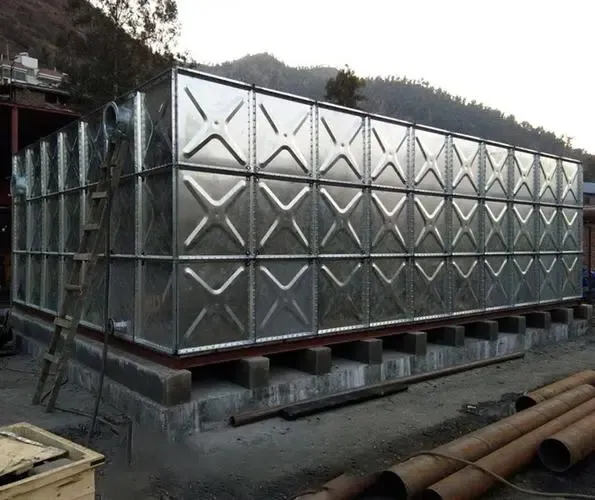loading...
- No. 9, Xingyuan South Street, Dongwaihuan Road, Zaoqiang County, Hengshui, Hebei, China
- admin@zjcomposites.com
- +86 15097380338
- Welcome to visit our website!
Advancements in Fiber Reinforced Polymer Rebar for Enhanced Structural Performance and Durability
Fiber Reinforced Polymer Rebar Revolutionizing Construction Materials
In the modern construction industry, the demand for innovative materials that offer superior performance and durability has never been higher. One such material that has gained considerable attention is Fiber Reinforced Polymer (FRP) rebar. This advanced composite material is transforming how engineers and architects approach building design, particularly in reinforcing concrete structures.
What is Fiber Reinforced Polymer Rebar?
Fiber Reinforced Polymer rebar is a composite material made from a polymer matrix reinforced with fibers, typically glass, carbon, or aramid. Unlike traditional steel rebar, FRP rebar provides several advantages that make it an attractive option for construction projects. The incorporation of fibers into the polymer matrix significantly enhances the mechanical properties of the material, leading to a high strength-to-weight ratio, excellent corrosion resistance, and improved fatigue performance.
Advantages of FRP Rebar
1. Corrosion Resistance One of the most significant benefits of FRP rebar is its resistance to corrosion. In many environments, especially coastal areas or regions with high moisture levels, traditional steel rebar is vulnerable to rust and deterioration. This can severely compromise the structural integrity of concrete elements. In contrast, FRP rebar does not corrode, resulting in longer-lasting structures and reduced maintenance costs over time.
2. Lightweight FRP rebar is considerably lighter than steel rebar. This characteristic simplifies transportation and installation, reducing labor costs and project timelines. The lightweight nature of FRP means that fewer resources are required for handling and placing the rebar, which can be particularly advantageous in projects with logistical constraints.
3. High Strength FRP rebar boasts a high tensile strength, which means it can withstand significant loads without failure. Its exceptional strength properties make it suitable for various applications, from bridges and tunnels to high-rise buildings and parking garages. This reliability ensures that structures can support the demands placed upon them, enhancing safety and durability.
4. Non-Magnetic and Non-Conductive In specific applications, such as in MRI facilities or near sensitive electronic equipment, the non-magnetic and non-conductive properties of FRP rebar can be crucial. These qualities prevent interference with sensitive instruments and also reduce the risk of electrical hazards, making FRP an ideal choice for specialized construction projects.
fiber reinforced polymer rebar

Applications of FRP Rebar
The versatility of FRP rebar allows it to be utilized in diverse applications. It is increasingly adopted in the construction of bridges, where its lightweight nature and corrosion resistance can significantly extend the lifespan of the structure. Additionally, FRP rebar is used in seawalls, marine structures, and concrete overlays, all of which are exposed to harsh environmental conditions.
Moreover, as sustainable building practices become more critical, the use of FRP rebar aligns with eco-friendly construction methods. Its longevity reduces the need for repairs and replacements, contributing to more sustainable construction projects.
Challenges and Future Prospects
Despite its numerous benefits, the widespread adoption of FRP rebar faces some challenges, including higher initial costs compared to traditional steel reinforcement. However, as production techniques improve and demand for sustainable construction materials increases, these costs are expected to decrease.
Research into enhancing the performance of FRP rebar is ongoing, focusing on developing hybrid materials that combine the strengths of various fiber types to produce even more robust and versatile reinforcements.
Conclusion
Fiber Reinforced Polymer rebar represents a significant advancement in construction materials, providing numerous advantages over traditional steel rebar. As technology evolves and the construction industry embraces innovative practices, FRP rebar is poised to become a mainstay in modern engineering, contributing to safer, more durable, and sustainable structures of the future.
-
The Rise of FRP Profiles: Strong, Lightweight, and Built to LastNewsJul.14,2025
-
SMC Panel Tanks: A Modern Water Storage Solution for All EnvironmentsNewsJul.14,2025
-
GRP Grating: A Modern Solution for Safe and Durable Access SystemsNewsJul.14,2025
-
Galvanized Steel Water Tanks: Durable, Reliable, and Ready for UseNewsJul.14,2025
-
FRP Mini Mesh Grating: The Safer, Smarter Flooring SolutionNewsJul.14,2025
-
Exploring FRP Vessels: Durable Solutions for Modern Fluid HandlingNewsJul.14,2025
-
GRP Structures: The Future of Lightweight, High-Performance EngineeringNewsJun.20,2025
